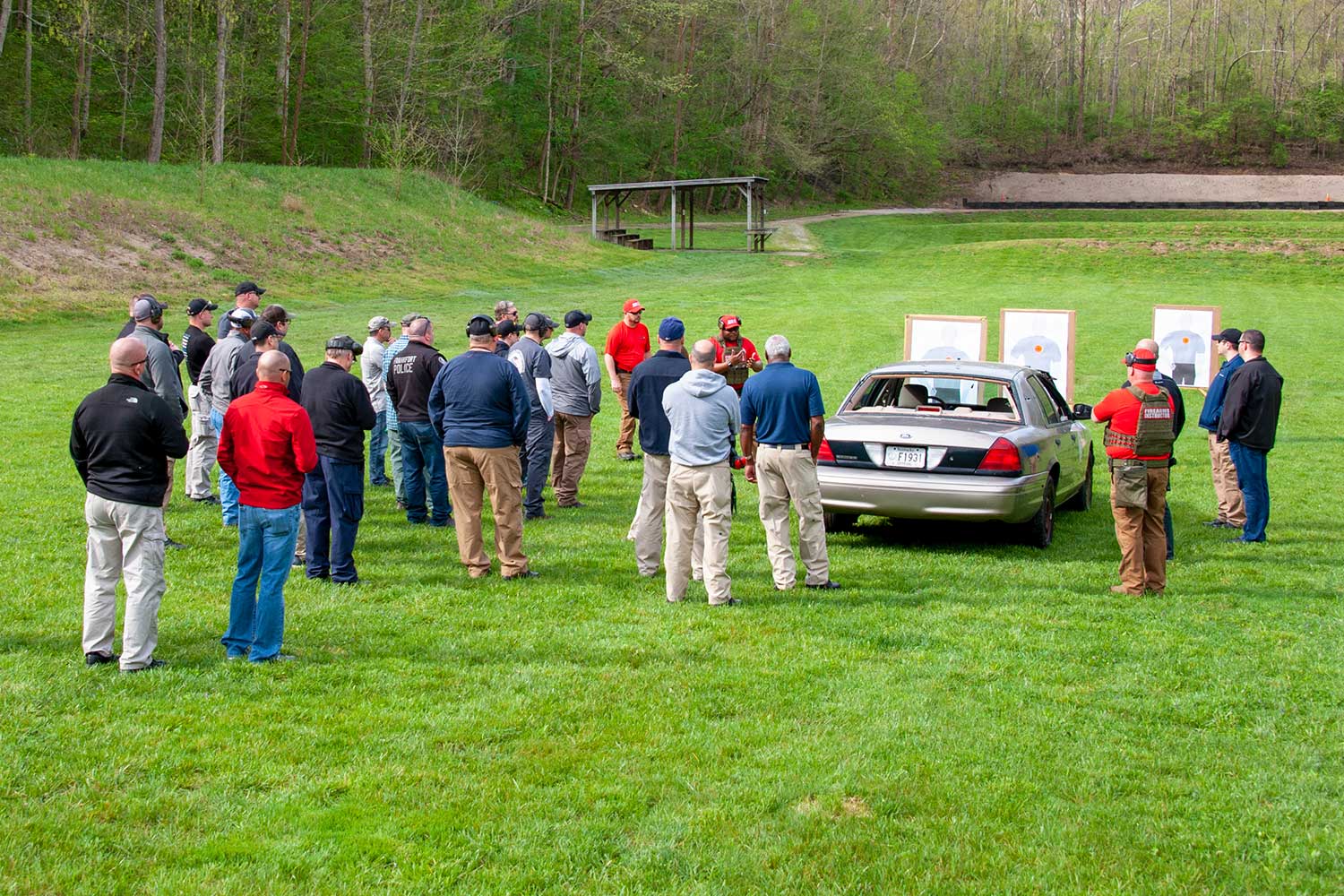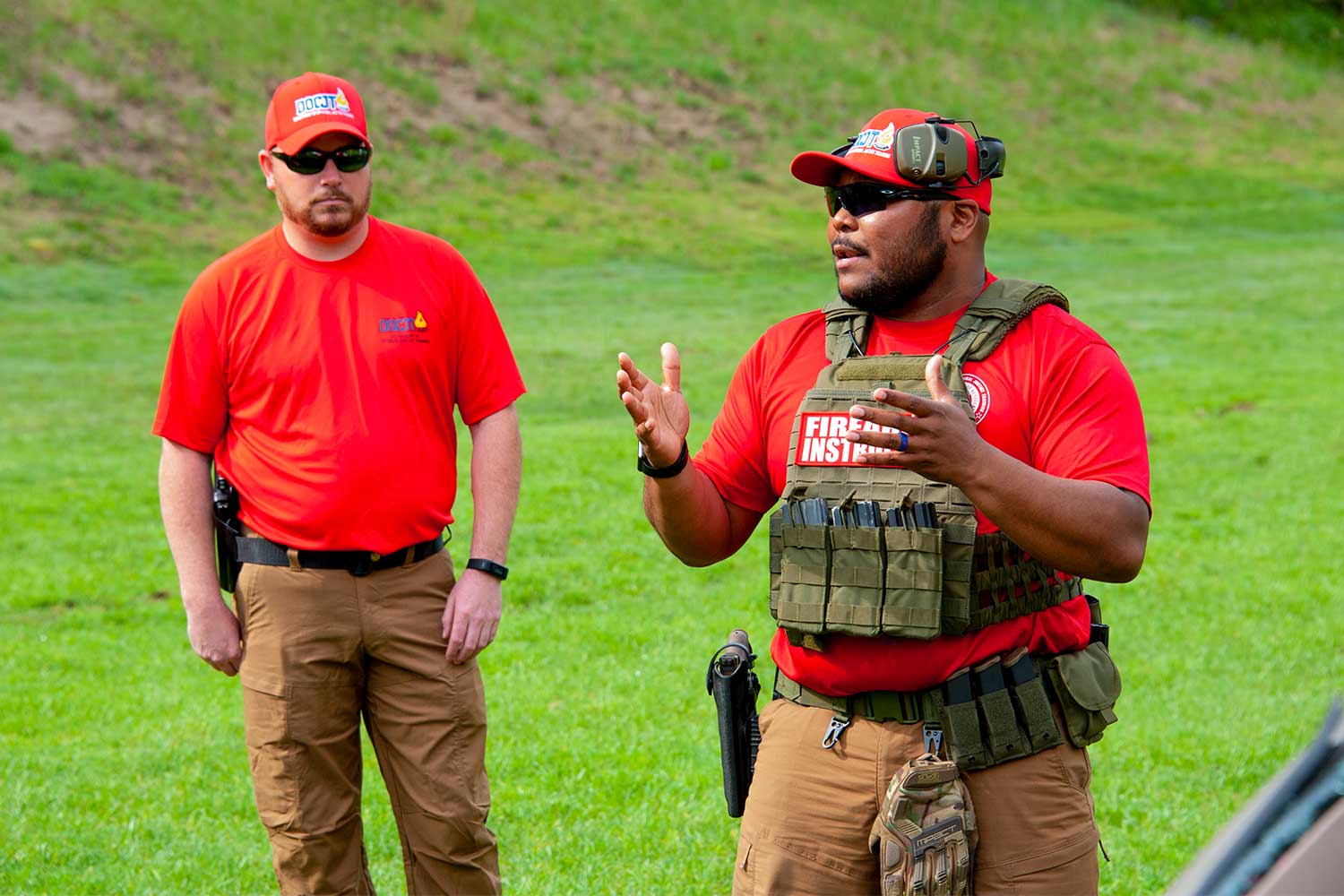Spring Safety Awareness Event Demonstrates Training, Tools
If you find yourself in a firefight behind the steering wheel of your cruiser, and you discharge your weapon through the windshield, do you know what will happen to the bullet? If you fire a 135 grain flex lock 9 mm bullet from a 7.5 inch 9 mm AR15, do you know how far that bullet will penetrate through your target – and what’s behind it?
Firearms were the focus of the Department of Criminal Justice Training’s third Safety Awareness Event, hosted this spring for the Current Leadership Issues for Mid-Level Executives class. The training offered students an opportunity to see for themselves how weapons and ammunition perform in different scenarios. The video attached to this article includes a glimpse into the training.
In their new Critical Officer Skills course, DOCJT’s Patrol Tactics instructors have incorporated live fire through windshields. During the demonstration, instructors set up targets at varying distances from the vehicle, the first at a distance of 10 yards.
So what happens to a bullet when it breaks through a concaved windshield? Instructors Jason Mike and Andy Wilson showed attendees that the bullet trajectory shifts upward, instead of where the weapon was aimed, as it breaks through the glass. The farther away the target, the less reliability there is for where that bullet might land. Because of this, Mike said he and the other instructors are teaching officers to get out of the vehicle and fight.
“Do we want to be 50 percent in law enforcement?” He asked. “We don’t want to bat that average, right?”
The second firearms demonstration was conducted by Firearms Section Supervisor Joe Wallace and illustrated the penetration of different weapons and bullets through water jugs. Wallace first fired a 75 grain SBR bullet from a 7.5 inch 556 AR (see the 1:23 mark in the video). The bullet penetrated seven jugs of water. However, Wallace noted the difference between water and tissue expansion, and that when traveling through tissue, the penetration would likely double the distance.
This is of particular importance in terms of school shooting scenarios.
“These short rifles in crowded places scares me a little,” he said. “It doesn’t have the velocity to make that round expand like it’s supposed to and it over penetrates.”
Wallace then demonstrated a 135 grain flex lock 9 mm bullet, fired from a 7.5 inch 9 mm AR15 (see the 2:18 mark in the video). The bullet penetrated three water jugs, which Wallace said is near the 16 inch penetration measure the FBI suggests.
However, the downside to the pistol caliber carbine, Wallace said, is that it won’t penetrate soft body armor (see the 3:05 mark in the video).
“Of the last five shootings, three were wearing rifle-rated body armor,” he said. “So even if we had a 556, it’s not going to penetrate the body armor. At that point, it goes back to training … if we see the body armor … we’re going to engage to the head or the pelvic girdle.”
Finally, DOCJT Instructor Kyle Hurt demonstrated a Rumbler siren on a Ford Police Interceptor (see the 1:01 mark of the video). The siren emits a low-frequency sound designed to be heard by motorists and pedestrians who might otherwise not hear the typical high-frequency sirens because of other noise, Hurt said.
The siren tones pulsate, which can cause bodily vibrations to nearby pedestrians and pervades hard surfaces, like glass and doors, more effectively than high-frequency sounds.
“Motorists with their windows up, radio on and not paying attention may hear either the low-frequency wave or feel the vibration,” Hurt said.
For details about future Safety Awareness Events, please contact DOCJT Special Assistant Carey Kitts.











